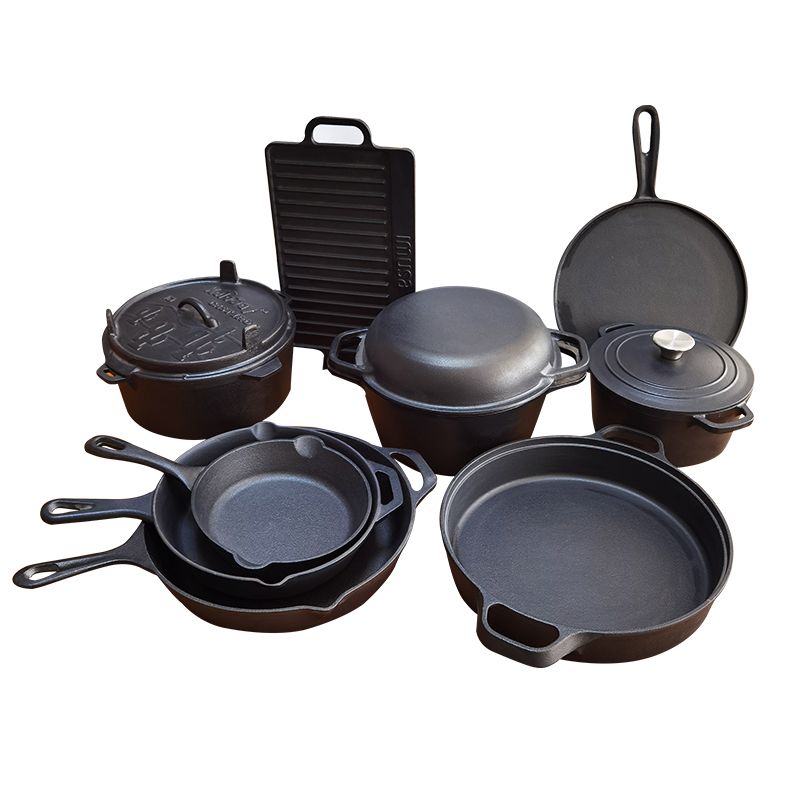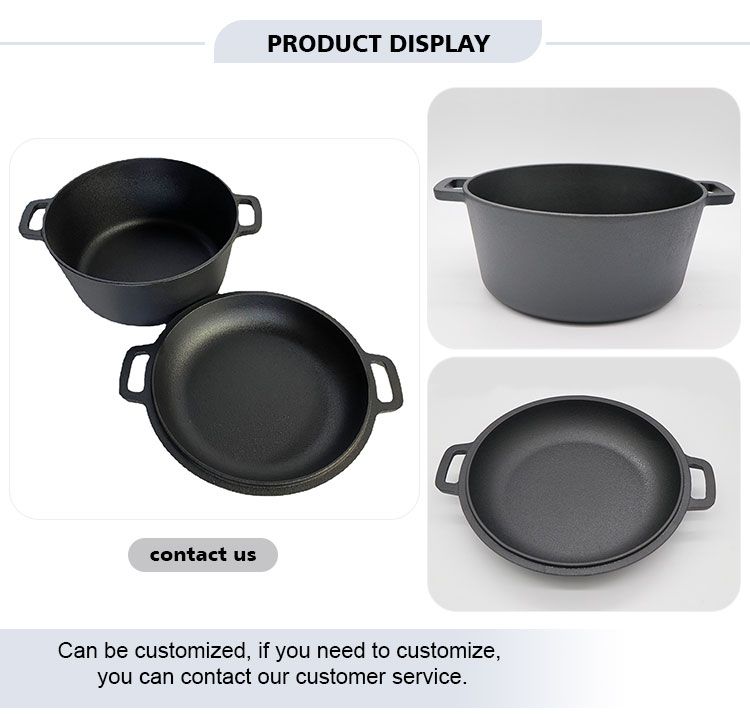For the iron pot we use in the kitchen, in addition to the normal use of daily maintenance is also a knowledge worth learning. After breaking down several aluminum and nonstick pots, I finally decided to buy a cast iron pot. Although I was not used to it at first, after a period of use and adaptation, I now like cast iron pots very much.
In fact, for most of the home kitchen, or such a simple and practical big iron pot to use the most convenient. In the following article, I will mainly introduce the knowledge about cast iron pot, including the principles and methods of use and maintenance, as well as the knowledge about purchase and safety.
No.1 Understanding iron pot: How to buy a pot?
According to the material, iron pot is roughly divided into 3 categories, raw iron pot with carbon content of more than 2% (cast iron pot), cooked iron pot with carbon content of less than 0.02% after purification (pure iron pot), and alloy pot with a certain proportion of other elements (stainless steel pot).
But in terms of surface treatment, there are a lot of different categories. Enamelled, resin or paint sprayed, electroplated, blackened by oxidation.
The characteristics of the iron pot are mainly determined by the material. Pig iron is brittle and hardly malleable, which is why cast-iron pots are heavy. Wrought iron is soft and malleable, so it can be forged into very thin pot.
Surface treatment to a certain extent can improve the iron pot is not resistant to acid and alkali, easy to rust and other shortcomings, so that it is easier to maintain, at the same time, the price can be higher.
Functionally, a bare iron pot is enough. Very durable, conservative estimate 10 years or 80 years will be fine. The price is also cheap. But some nameless iron pots may have the problem of excessive heavy metals, so it is safer to buy branded ones.
Another factor to consider is the shape, workmanship, quality, weight and other non-rigid conditions, according to their preferences on the line.
No.2 Why should the iron pot be maintained
When the iron pot was first bought, it was silvery white of pure iron itself. At this time, it is not only fried what sticks to what, but also easy to rust. You can’t cook like that. We have to figure something out.
The most direct way is to coat it with a nonstick layer. The use of PTFE and other materials as non-stick coating, that is only a few decades ago. The method we’ve been using since ancient times is actually oil plating.
It was discovered early on that cooking with oil in an iron pot would get better and better, and the pot would get darker and less sticky. In order to achieve this initial effect in the first place, there is the “boiling pot” procedure. The traditional way to boil a pot is to clean it and cook it over and over again with lard.
Grease in high temperature, aerobic conditions will occur decomposition, oxidation, polymerization and other reactions, and the so-called pot and pot, in fact, is the use of these reactions.
In the process of high-temperature reaction of grease, some volatile small molecules turn into soot and leave, and some other molecules form large molecules through polymerization, dehydration and condensation and other reactions to attach to the iron pot, which is the origin of the layer of black oxide film on the iron pot. And iron is an excellent catalyst for this process.
So it’s exactly the same principle as a nonstick pot. Equivalent to our own use of the nature of grease to iron pot ”plated” a layer of high score non-stick layer, but the composition is complex, almost every pot has its own unique composition, can be made into a non-stick pot.other materials made of non-stick pot, coating scratch the pot can not be used. But our homemade rust-proof coating, when scratched, can be maintained, and it’s a good pot again. This is the reason and principle of iron pot maintenance.
No.3 Iron pot maintenance methods
Our goal is simply to get a stronger, thicker oxide film.
The tighter the bonds between the molecules, the stronger they are. So the more unsaturated the oil, the better. Flax seed oil is the most prone to oxidation polymerization and the most effective oil. Soybean oil, sesame oil, sunflower oil, corn oil and other polyunsaturated fatty acid content is also good.
Other oils can be used as well, but the network of bonds is not as dense as, say, linseed oil. Lard, which we often use to boil the pot, is just a tradition that has been passed down and is not as good as ordinary vegetable oil in terms of practical results.
With the ingredients in place, the next thing is to get them ready to react. The correct way to do this is to evenly and thinly grease the inside of a pot with kitchen paper, then set the heat on high and turn the sides of the pot until it is all dry and there is not much smoke. Then apply a thin coat of oil, burn again, repeat several times. (i.e. boiling step)
The uniform overlapping of several layers of oil film makes it physically denser. General online sellers will provide free boiling service. If you do it yourself, be aware that the surface of the new factory pot will be covered with mechanical protective oil and must be carefully washed off. You can boil a pot of water and put it on fire to dry, then wash it with dish washing liquid and put it on fire to dry, repeat 2-3 times.
If an iron pot is badly rusted during use, remove the rust with vinegar and a brush before returning to the pot.
In the process of using the iron pot, the oil film will naturally become thicker and thicker. Scuff caused by local scratching can be repaired with just one or two more dishes. It’s okay to use it occasionally to simmer water.
The process of “pot cultivation” is not complicated, we also break it down into two basic goals: to prevent rust and reduce oil film shedding.
Rust prevention: The key point of rust prevention is waterproof. Be sure to dry or dry after each use, and do not hold water overnight. If you’re not going to use it for a long time, dry it in a layer of oil and store in a cool, dry place.
Reduce oil film shedding: We often say that the iron pot should not be washed with dish washing liquid, can not be used to boil water, at first use less acidic seasoning, these are reasonable.
No amount of talking is as good as using a cast-iron pan. With so much knowledge above, you should already know how to use and maintain a cast iron pot. Yes, that’s enough. Go ahead and use it. The steps I’ve outlined above are just a guide, and don’t worry if you don’t do it right. As you will discover, the iron pot is really durable!
Post time: Dec-27-2022






